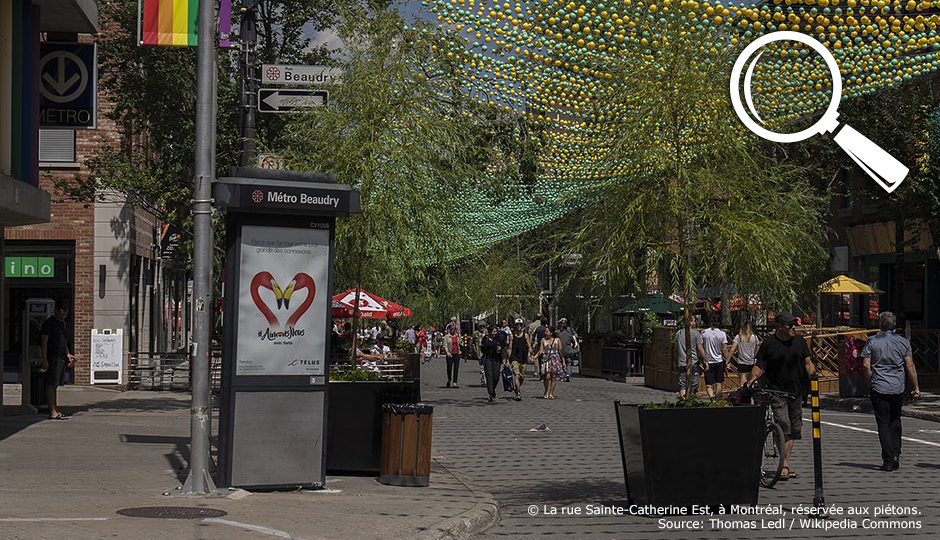Auteur : Agence Science Presse - Maxime Bilodeau
Around the world, the COVID-19 lockdown has led to all kinds of urban redesign initiatives. Some involve closing commercial streets to cars. At first, merchants saw this as a threat to their business. But the studies tell us the opposite, the Rumour Detector finds.
This spring, Ville de Montréal announced it wanted to implement 327 km of new pedestrian and bike lanes throughout the metropolis. The Ville de Québec municipal administration is taking similar action, multiplying the number of streets exclusively reserved for pedestrians and cyclists. It had six pedestrianized commercial arteries (out of 12) at the beginning of June. In New York, Oakland (California), Kansas City and elsewhere in the United States, the authorities have closed streets to traffic and authorized restaurants to install outdoor tables. In Paris, some streets are described as “bicycle boulevards”.
Merchants don’t always welcome the transformation. But many studies have concluded that removing automobile traffic from commercial streets is generally good for business. A report on the question was published in 2011 by the French Ministry of Ecological Transition and Solidarity. It established that the overall economic impacts of pedestrianizaton were fairly positive. Another study was conducted in Melbourne, Australia in 2008. It revealed that conversion of parking spaces to bicycle paths had a positive impact on sales for neighbouring businesses.
Yet another study was conducted in 2012 by researchers at the University of Portland, Oregon. They found that pedestrians and cyclists consumed just as much, if not more, than motorists on each visit, and their visits were more frequent. Québec City commissioned a survey in 2018, after the controversial installation of a bike lane on 3e Avenue in Limoilou district. The results indicated that the biggest consumers travelled on foot or by bicycle nearly 80% of the time.
Success factors
This isn’t the first time the question has been raised in Montréal. The pedestrianization of Rue Sainte-Catherine East, in the Gay Village, has been a success story for nearly 15 years. In 2016, a decade after the project was launched, the Village’s commercial development corporation (Société de développement commercial du Village gai de Montréal ) reported an interesting finding. The vacancy rate for commercial premises was lower than for other Montréal commercial arteries.
A Master’s thesis in geography published in 2011 at the Université du Québec à Montréal analyzed the “factors favouring the pedestrianization process in the North American context”. (Today the former student is a planning advisor with Ville de Montréal.) She addressed the specific cases of Avenue du Mont-Royal , in the early 2000s, and Rue Sainte-Catherine Est.
Her conclusions found the following prerequisites favouring the success of such projects. “The importance of the power of all the players involved in the making the final decision” is conclusive. She wrote that decision-making “seems to have little relationship to the project as such, and its impacts, but is more related to the location of the leadership […]. In our case, this is the leadership of the commercial development corporations”.
In other words, a form of consultation of the key groups concerned seems necessary for successful pedestrianization. It guarantees social acceptability. Without meetings, communications and other opinion surveys, merchants and citizens feel the project doesn’t really concern them. That’s even if it theoretically meets their needs.





